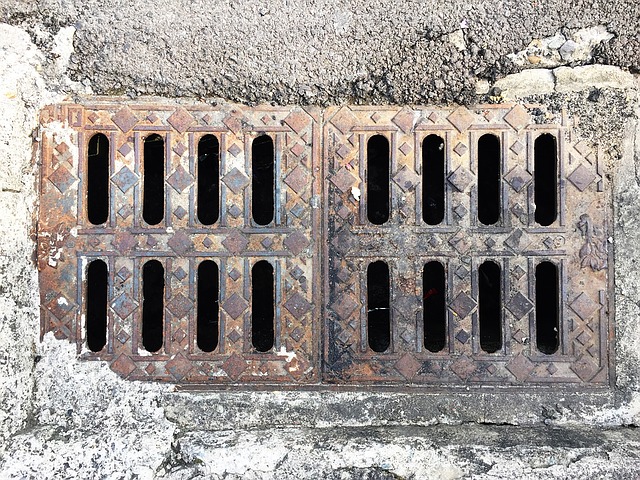Highway drainage
Contents |
[edit] Introduction
The construction of roads affects the natural surface and subsurface drainage pattern of watersheds or hill-slopes. The provision of adequate drainage is important to prevent the accumulation of excess water or moisture on or within road constructions that can adversely affect their material properties, compromise overall stability and affect driver safety. Drainage must cope with water from the carriageways, hard shoulders, foot/cycle paths, verges, and adjacent catchment areas.
The design of highway drainage will depend on several factors, including:
- The intensity of rainfall expected.
- The size of catchment area.
- The permeability of the surfaces.
The road camber or cross-fall should be designed to cope with heavy water run-off. Insufficient cross-fall can increase the risk of vehicles skidding or aquaplaning on the surface water. The standard cross-fall for roads is usually taken as 1:40, although the camber will vary depending on the individual requirements of the road.
[edit] Urban roads
Surface water is generally collected in channels at the road-side and discharged through gullies (drainage gratings at the edges of the road) into storm water sewers. Gullies are typically positioned at intervals of 25-30 m, depending on the road width and nature of the cross-fall. Gully covers can be either top opening or side opening.
To reduce the number of required drainage points, pavings and verges should be graded towards the channel.
Culverts may also be used. A culvert is a closed conduit or tunnel used to convey water from one area to another, normally from one side of a road to the other side.
For more information, see Culvert.
[edit] Rural roads
Minor roads usually use simple openings or channels which feed into roadside ditches.
Most main roads use a system of gullies and piped sewers. However, soakaways may also be used to discharge water, these are large underground chambers into which water flows from a gully. Water collects and gradually soaks through holes into the surrounding ground or to streams and roadside ditches.
For more information, see Soakaway.
For roads with hard shoulders, it is usual for the kerb to be kept flush with the road surface, with a precast concrete channel placed at the outside edge to drain water. This channel discharges water into gullies.
[edit] Related articles on Designing Buildings Wiki:
- Bituminous mixing and laying plant.
- Catchment flood management plans.
- Code of Practice for Ironwork Systems Installation and Refurbishment.
- Drainage.
- Gulley.
- Highway engineers and drainage.
- Infrastructure.
- Kerbs.
- Manhole.
- Manhole cover.
- Overview of the road development process.
- Pavement.
- Planning for floods.
- Pumps and dewatering equipment.
- Road construction.
- Road improvement scheme consultation.
- Road joints.
- Runway construction.
- Section 50 agreement.
- Sewer construction.
- Soakaway.
- Successful road kerb trial.
- Sustainable urban drainage systems SUDS.
- Types of road and street.
- Water engineering.
[edit] External references
- ‘Introduction to civil engineering construction’ (3rd ed.), HOLMES, R., The College of Estate Management (1995)
- ‘Building Construction Handbook’ (6th ed.), CHUDLEY, R., GREENO, R., Butterworth-Heinemann (2007)
Featured articles and news
RTPI leader to become new CIOB Chief Executive Officer
Dr Victoria Hills MRTPI, FICE to take over after Caroline Gumble’s departure.
Social and affordable housing, a long term plan for delivery
The “Delivering a Decade of Renewal for Social and Affordable Housing” strategy sets out future path.
A change to adoptive architecture
Effects of global weather warming on architectural detailing, material choice and human interaction.
The proposed publicly owned and backed subsidiary of Homes England, to facilitate new homes.
How big is the problem and what can we do to mitigate the effects?
Overheating guidance and tools for building designers
A number of cool guides to help with the heat.
The UK's Modern Industrial Strategy: A 10 year plan
Previous consultation criticism, current key elements and general support with some persisting reservations.
Building Safety Regulator reforms
New roles, new staff and a new fast track service pave the way for a single construction regulator.
Architectural Technologist CPDs and Communications
CIAT CPD… and how you can do it!
Cooling centres and cool spaces
Managing extreme heat in cities by directing the public to places for heat stress relief and water sources.
Winter gardens: A brief history and warm variations
Extending the season with glass in different forms and terms.
Restoring Great Yarmouth's Winter Gardens
Transforming one of the least sustainable constructions imaginable.
Construction Skills Mission Board launch sector drive
Newly formed government and industry collaboration set strategy for recruiting an additional 100,000 construction workers a year.
New Architects Code comes into effect in September 2025
ARB Architects Code of Conduct and Practice available with ongoing consultation regarding guidance.
Welsh Skills Body (Medr) launches ambitious plan
The new skills body brings together funding and regulation of tertiary education and research for the devolved nation.
Paul Gandy FCIOB announced as next CIOB President
Former Tilbury Douglas CEO takes helm.
UK Infrastructure: A 10 Year Strategy. In brief with reactions
With the National Infrastructure and Service Transformation Authority (NISTA).























